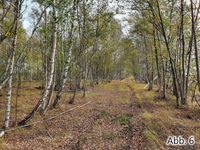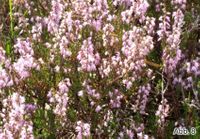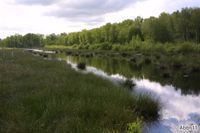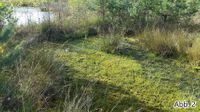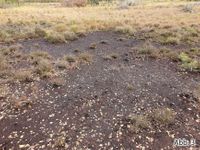Habitats - in the Great Moor conservation area
In the “Great Moor” peat cutting site, which was only historically a moor, there are now several areas of moorland again: small bodies of shallow water and deep dammed ditches that are overgrown with peat moss. The vegetation here includes cotton grass, sundew, rushes and many other plants that are typically encountered in moorlands. Sparse birch forests
(Figs. 5 and 6) are extremely beautiful, especially in the autumn, but they take a lot of water out of the moor.
There are large areas that are covered with different types of moorland heather (Figs. 7-9).
The moor has become “dangerous” again. The danger of deep, dammed ditches (Fig. 10) covered by a thin, unstable layer of peat moss. And then there are large shallow water lakes (Fig. 11).
The Great Moor has areas of peat moss (Fig. 2), areas of cotton grass (Fig. 4) and hummock-hollow complexes (Fig. 3).
These are precisely the areas that hold great biodiversity. Hummocks are small, overgrown mounds, while the hollows are wet recesses. Their microrelief is extremely sensitive to footsteps and even the slightest of changes to the hydrological balance can jeopardise these complex habitats. Figure 12 shows a typical moorland meadow.
Links to other stations in the museum - in English language:
<1> <2> <3> <4> <5> <6> <7> <8> <9> <10> <11> <12> <13> <14> <15> <16> <17> <18> <19> <20> <21> <22> <23>

